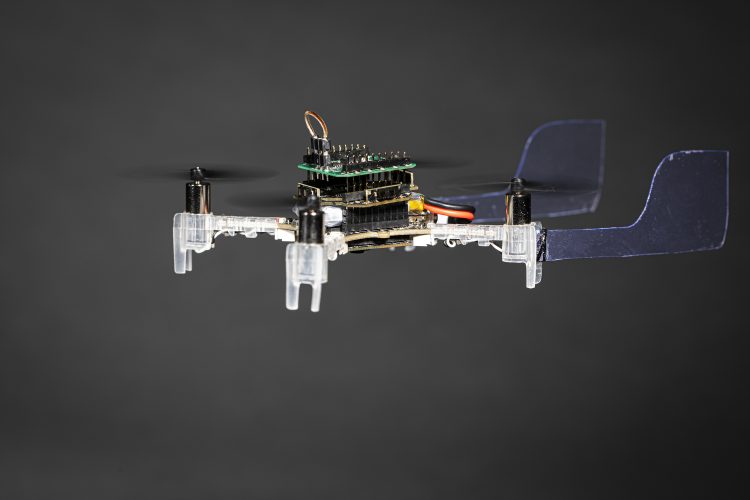A team of scientists has developed a unique kind of “smelling” autonomous drone called ‘Smellicopter’ that could eventually be used to detect odors on Mars.
Why India’s Ruling Party BJP May Wash Its Hands Of Supreme Court-Monitored NRC Exercise
According to a study published in the journal ‘Bioinspiration & Biomimetics’, the Smellicopter can sense and avoid obstacles while it travels through the air. It will have a live antenna extracted from a moth to navigate towards smells.
The reason why moths have been chosen for the project is due to the fact that these insects use their antennae to sense chemicals in the surrounding environment and navigate in that direction of food or other moths.
The drone, which has been described to have incredible potential, is small in size and possesses the ability to travel to places, where humans cannot.

A blog post on the official website of the University of Washington revealed that the Smellicopter can carry out dangerous tasks that involve going near an unstable structure, unexploded devices, or the apocalyptic aftermath of a natural disaster.
Work is underway by researchers to tap the drone’s capability of maneuvering through disparate situations by smelling chemicals in the air. This is considered crucial for trace locations of disaster survivors, explosives, gas leaks, and other scenarios.
“We did design the Smellicopter so that it would be small and fit into small indoor spaces which are not usually accessible to large drones,” said Melanie Anderson, a doctoral student at the University of Washington.
Talking about the future possibility of using the drone on the Red Planet, Anderson said, “I’m sure that the drone would be able to fly on Mars.”
It is still unclear how the moth antenna will react to the atmosphere of the Red Planet.
“I’m not sure how the antenna would react to the atmosphere, but if it did survive, it could smell chemicals there too,” said Anderson.

She said that certain components will have to be swapped for the ones suited for Mars, which will enable the Smellicopter to detect odors on the planet.
While this is a significant breakthrough, the fact is that most artificial sensors are not sensitive or fast enough to identify, process, and pursue specific smells or odor plumes while hovering in the air.
“Natural sensors are much better at detecting odors than portable artificial sensors,” Anderson said.
“Moth antennae are small, lightweight, low-powered, and extremely sensitive compared to artificial sensors,
“By using an actual moth antenna with Smellicopter, we’re able to get the best of both worlds: sensitivity of a biological organism on a robotic platform where we can control its motion,” added Anderson.
Before the antennas of the moths are removed for use, the insects are anesthetized in the fridge.
Thomas Daniel, the co-author of the study and professor of biology co-supervising Anderson’s doctoral research, said, “Cells in a moth antenna amplify chemical signals.”
The antennae used on the Smellicopter comes from a model moth species, the Manduca sexta, which has been used in other research projects as well.
According to the blog post, once the antennas are separated from the live moth, it remains both chemically and biologically active for a period of four hours. However, this duration can be further extended with the help of storing the antennas in the fridge.
Each end of the antennae was added with tiny wires by Anderson and her team, to connect it to an electrical circuit, which helped them measure the average signal from the antenna cells.
Following this, Anderson and her team compared this average signal to an artificial sensor with the help of placing both on one end of a wind tunnel.

This would in turn let smells come down the channel of the air, and get a response from both sensors. The scents consisted of a floral scent and ethanol, which is a certain type of alcohol.
“We based the Smellicopter’s search trajectory on a nature-inspired research algorithm much like what a moth does to seek out odors,
“When you smell the odor and there is a slight breeze, you can almost always assume that the source of the odor is upwind from you since odor travels with the wind,” said Anderson.
According to the team, the Smellicopter would not need GPS in order to navigate, and will rather use a camera to evaluate its surroundings, in a similar manner how insects use their eyes.
In the current form, the Smellicopter does not perform well in dusty environments. Hence, additional components could be added, “which can function well in other environments,” said Anderson.
Follow EurAsian Times on Google News




